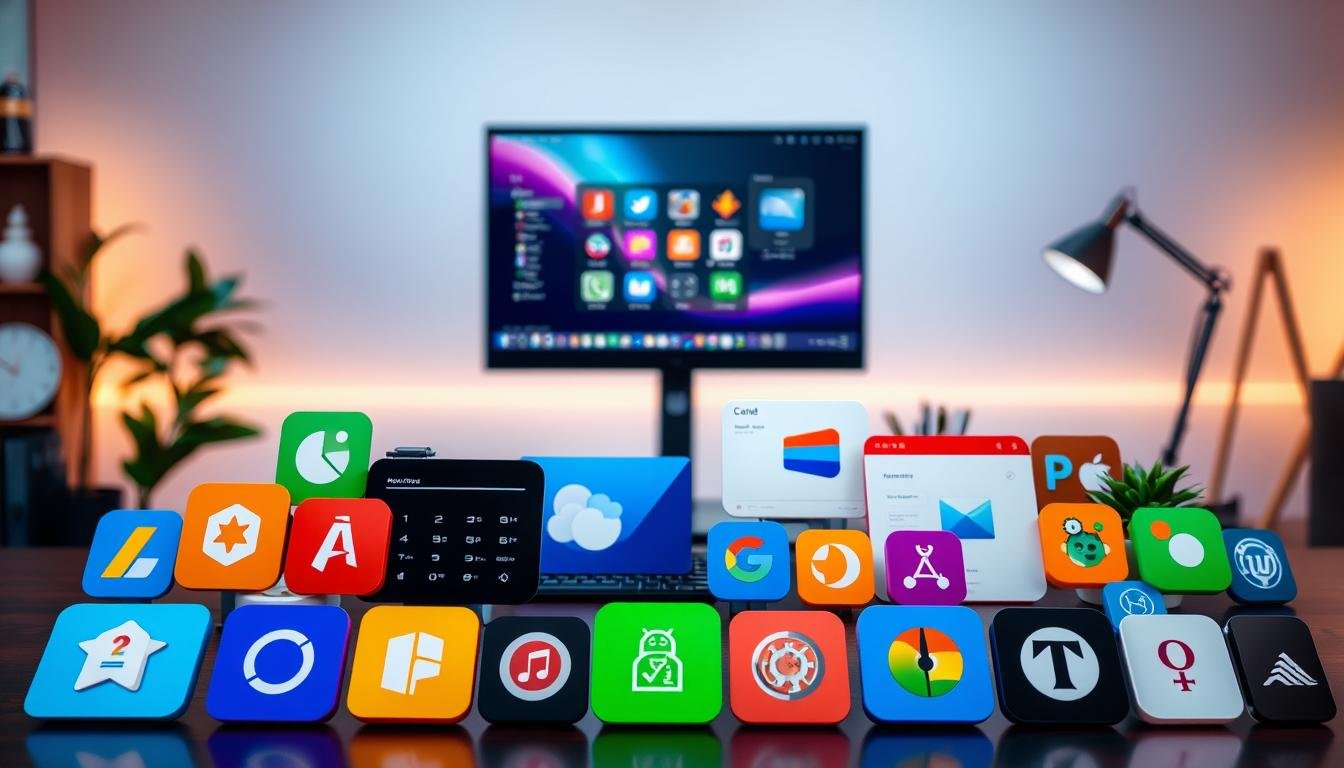Have you ever wondered why it’s so hard to stay focused in today’s world? With constant notifications, endless scrolling, and a flood of information, our minds are under siege. Studies show the average attention span has dropped to just 8 seconds—shorter than a goldfish’s. This isn’t just a personal struggle; it’s a global crisis.
Mark Manson compares this to the 20th-century nutritional crisis. Just as processed food overwhelmed our diets, digital distractions are overwhelming our minds. Google reports more information has been created in the last two years than in all prior human history. It’s no wonder 72% of workers report daily productivity loss due to interruptions.
Managing focus is the 21st-century equivalent of staying fit. This article introduces a 5-step framework to help you regain control. From distinguishing between nutritious and junk information to minimizing digital distractions, you’ll learn practical strategies to boost productivity and reclaim your mental clarity.
Key Takeaways
- Average attention spans have dropped to 8 seconds, worse than a goldfish.
- Digital distractions are likened to the 20th-century nutritional crisis.
- 72% of workers lose productivity daily due to interruptions.
- Focus management is essential for modern productivity.
- A 5-step framework can help regain cognitive control.
What is The Attention Diet?
In a world overflowing with information, managing focus has become a critical skill. The attention diet is a cognitive nutrition plan designed to filter what we consume mentally. Just as we choose healthy foods for our bodies, this approach helps us select nutritious information over digital junk.
Mark Manson draws a striking parallel between 20th-century nutrition and 21st-century focus. Factory workers once struggled with physical health due to poor diets. Today, office workers face mental strain from constant distractions. The attention economy, a term coined by Herbert A. Simon in 1971, highlights how focus has become a scarce resource.
Understanding the Concept
Before smartphones, people spent less time on screens. Now, the average person logs 6.5 hours daily. This shift has led to what experts call “cognitive caloric intake”—the idea that our minds process information like our bodies process food. Too much junk, like clickbait or social media, can overwhelm us.
An MIT study found multitasking reduces productivity by 40%. This highlights the need for an attention diet to prioritize quality over quantity. By focusing on long-form content like books or documentaries, we can nourish our minds effectively.
Why Focus is the New Currency
In today’s fast-paced world, focus is a key determinant of success. Nir Eyal’s research on attention capital emphasizes its value. A hedge fund even banned Bloomberg terminals to improve analyst focus, showing how eliminating distractions can boost performance.
Healthy relationships also depend on focus. Face-to-face interactions foster deeper connections than digital-only ones. By adopting an attention diet, we can reclaim our mental clarity and thrive in both personal and professional spheres.
Why The Attention Diet Matters
Modern life bombards us with endless distractions, making focus a rare commodity. From constant notifications to social media feeds, our minds are pulled in countless directions. This isn’t just annoying—it’s costly. Studies show that interruptions can take up to 23 minutes to recover from, significantly impacting productivity.
Context-switching, or jumping between tasks, reduces efficiency by 40%. This phenomenon, known as “attention residue,” leaves our brains struggling to refocus. A Microsoft study found that the average attention span has dropped to just 8 seconds, down from 12 seconds in 2000. This decline highlights the urgent need to manage our mental energy better.
The Impact of Digital Distractions
Social media plays a significant role in this crisis. Since 2015, checking frequency has surged by 300%. Platforms are designed to exploit dopamine-driven feedback loops, keeping us hooked. This constant stimulation leads to “continuous partial attention,” where we’re never fully present in any task.
Smartphones amplify the problem. Nearly 89% of users experience “phantom vibration syndrome,” imagining their phones are buzzing. These small interruptions add up, costing the U.S. economy $588 billion annually in lost work output.
How Attention Affects Productivity
Focus is the backbone of productivity. When we’re distracted, even simple tasks take longer. The French “Right to Disconnect” law, which limits after-hours work emails, has shown promising results in improving work quality and employee well-being.
Attention depletion is often compared to cognitive diabetes. Just as sugar overload harms the body, information overload harms the mind. By adopting strategies to filter out digital distractions, we can reclaim our mental clarity and achieve more in less time.
Step 1: Identify Nutritious Information and Relationships
In a digital age overflowing with content, choosing what to consume is crucial. Not all information is created equal. Some sources nourish our minds, while others drain our focus. This step helps you distinguish between nutritious information and digital junk, ensuring your mental diet supports productivity and clarity.
Defining Nutritious vs. Junk Information
Think of your mind as a filter. Just as you’d avoid processed food, steer clear of low-quality content. Use the “Information FDA” criteria: Reliability, Helpfulness, and Importance (RHI test). If a source doesn’t meet these standards, it’s likely junk.
Apply the 24-hour rule. Before engaging with new information, ask: Will this still matter tomorrow? Curate cognitive superfoods like Longform.org, Aeon, and Harvard Business Review. These platforms offer depth and insight, unlike fleeting social media posts.
Building Healthy Digital Relationships
Your online connections shape your mental space. Unfollow accounts that trigger anxiety or doomscrolling. Studies show unfollowing 10 toxic accounts can improve your feed by 37%. Use the Dunbar Number principle—limit your digital circle to 150 meaningful relationships.
Audit your connections with a “Connection ROI” worksheet. Are these people adding value or draining energy? Manson’s Law applies here: If you’re not a “Fuck Yes” about a connection, cut it. Prioritize quality over quantity in your digital interactions.
Step 2: Cut Out the Noise
Digital clutter is overwhelming, but cutting it out can transform your focus. From endless notifications to irrelevant updates, noise drains mental energy. This step focuses on decluttering your digital space to enhance productivity and clarity.
Unfollowing Unnecessary Social Media Accounts
Social media often feels like a mental minefield. Start with a “Social Media Autopsy.” Review your accounts and unfollow those that don’t add value. A University of Copenhagen study found deleting Facebook reduces anxiety by 57%.
Use a respectful script for unfollowing or unfriending. Focus on quality over quantity. Limiting your digital circle to meaningful connections can improve your feed by 37%.
Limiting News and Media Consumption
News can be addictive, but not all of it is essential. Compare CNN (junk food) to The Economist (superfood). Use tools like Inoreader or RSS feeds to control your intake. This ensures you only consume relevant and reliable content.
Be aware of “headline hacking.” Sensational headlines manipulate attention. A 30-day news fast involving 1,200 participants showed significant mental clarity improvements. Consider Wikipedia’s current events section as a primary news source.
For your phone, try an “Appectomy.” Delete apps that waste time. Switch to “Monochrome Mode” to reduce visual distractions. These small changes can preserve focus and reduce consumption of unnecessary media.
Step 3: Schedule Your Diversions
Taking control of your time starts with intentional planning. Scheduling diversions helps you stay focused while allowing for necessary breaks. This step ensures you manage distractions effectively without feeling overwhelmed.
Time Blocking for Focused Work
Time blocking is a powerful technique to structure your day. Instead of multitasking, dedicate specific blocks to single tasks. For example, limit email checking to two times day. This reduces context-switching and boosts productivity.
Try “Pomodoro 2.0,” which uses 90-minute ultradian cycles for deep work. Tools like Focusmate offer virtual coworking spaces to keep you accountable. CEOs like Elon Musk and Bill Gates use time-block templates to maximize efficiency.
Setting Boundaries with Technology
Your phone can be a major source of distraction. Limit social media use to 30 minutes per day. Apps like RescueTime and Screen Time analytics reveal “zombie scroll” patterns, helping you cut unnecessary usage.
Consider a “Tech Sabbath” for digital detox. Blocking software like Freedom or Cold Turkey can prevent access to distracting apps. Simple boundary phrases like “I do deep work until 11” can also protect your focus.
Microsoft Japan’s 4-day workweek case study shows how reducing work time can improve productivity. By scheduling diversions and setting boundaries, you can reclaim your mental clarity and achieve more.
Step 4: Cultivate Deep Focus
Building deep focus requires intentional habits and the right tools. In a world filled with distractions, developing sustained concentration is essential for productivity. This step explores mindfulness practices and technology solutions to help you achieve laser-like focus.
Practicing Mindfulness and Meditation
Mindfulness can significantly improve your attention span. Harvard research shows it increases focus duration by 27%. Start with simple techniques like “Box Breathing”—inhale for 4 seconds, hold for 4, exhale for 4, and repeat. This method instantly calms the mind and sharpens focus.
Apps like Headspace and Calm are excellent for guided meditation. Compare their features to find what works best for you. A consistent practice of even 10 minutes per day can yield noticeable results.
Using Tools to Block Distractions
Technology can be both a distraction and a solution. Tools like Cold Turkey Blocker help eliminate interruptions by scheduling focus times. Set it to block social media or other distracting apps during work hours.
Create a “Distraction-Free iPhone” setup. Turn off unnecessary notifications and use grayscale mode to reduce visual clutter. Pair this with noise-cancelling headphones to create an optimal environment for deep work.
For reading marathons, try “Attention Weightlifting.” Start with 30 minutes of uninterrupted reading and gradually increase the duration. This builds mental stamina and improves focus over time.
Step 5: Build Accountability
Accountability can be the missing link in achieving long-term success. Studies show that having an accountability partner increases success rates by 72%. This step focuses on creating systems to keep you on track and measure your progress effectively.
Finding an Accountability Buddy
Partnering with someone who shares your goals can make a significant difference. Whether it’s a friend, colleague, or mentor, an accountability buddy helps you stay committed. Use an “Accountability Contract” template to outline expectations and penalties for missed targets.
Platforms like coach.me and StickK offer tools to formalize commitments. These apps allow you to set goals, track milestones, and even stake money on your success. A case study of mastermind groups shows how collaborative accountability boosts productivity.
Tracking Your Progress
Measuring your actions ensures you stay aligned with your objectives. Habit trackers can increase consistency by 3x. Tools like Focus@Will provide attention-tracking analytics to help you understand your focus patterns.
Create an “Attention Audit” spreadsheet to log distractions and improvements. Jerry Seinfeld’s “Don’t Break the Chain” method is a simple yet effective way to build habits. Celebrate milestones with a “Reward Ladder” to stay motivated.
For time management, consider GDPR-compliant tools like Toggl or RescueTime. These tools help you analyze how you spend your day and eliminate unproductive things. By tracking your progress, you can make data-driven adjustments to stay on course.
Conclusion: Embracing The Attention Diet
Reclaiming focus in a distracted world starts with small, intentional steps. By following the 5-step framework, you can transform your mental clarity and boost productivity. Over 12 months, consistent practice can lead to significant improvements, as seen in Mark Manson’s 3x increase in writing output.
Be mindful of backsliding into old habits. Quarterly audits and ongoing maintenance rituals ensure long-term success. Start with a 7-day challenge to build momentum and establish healthy routines.
Resources like books, apps, and courses can support your journey. Imagine a life of cognitive abundance, where quality interactions and meaningful relationships thrive. You’re not just improving focus—you’re pioneering a new way to navigate the modern world.
FAQ
What is the Attention Diet?
It’s a strategy to manage distractions by focusing on quality content and minimizing unnecessary noise from media and apps.
Why is focus considered the new currency?
In a world full of distractions, the ability to concentrate on meaningful tasks directly impacts productivity and success.
How do digital distractions affect us?
Constant notifications and social media can reduce focus, lower productivity, and even harm mental health over time.
What’s the difference between nutritious and junk information?
Nutritious information adds value to your life, like educational podcasts, while junk information is time-wasting, like endless scrolling.
How can I limit news consumption effectively?
Set specific times to check trusted sources and avoid overloading yourself with updates throughout the day.
What’s the benefit of time blocking?
It helps allocate dedicated periods for focused work, reducing interruptions and improving efficiency.
How can mindfulness improve focus?
Practices like meditation train your brain to stay present, making it easier to concentrate on tasks for longer periods.
What tools can block distractions?
Apps like Freedom or Focus@Will can limit access to distracting websites and apps during work hours.
Why is accountability important in this process?
Sharing goals with a buddy or tracking progress keeps you motivated and committed to reducing distractions.







